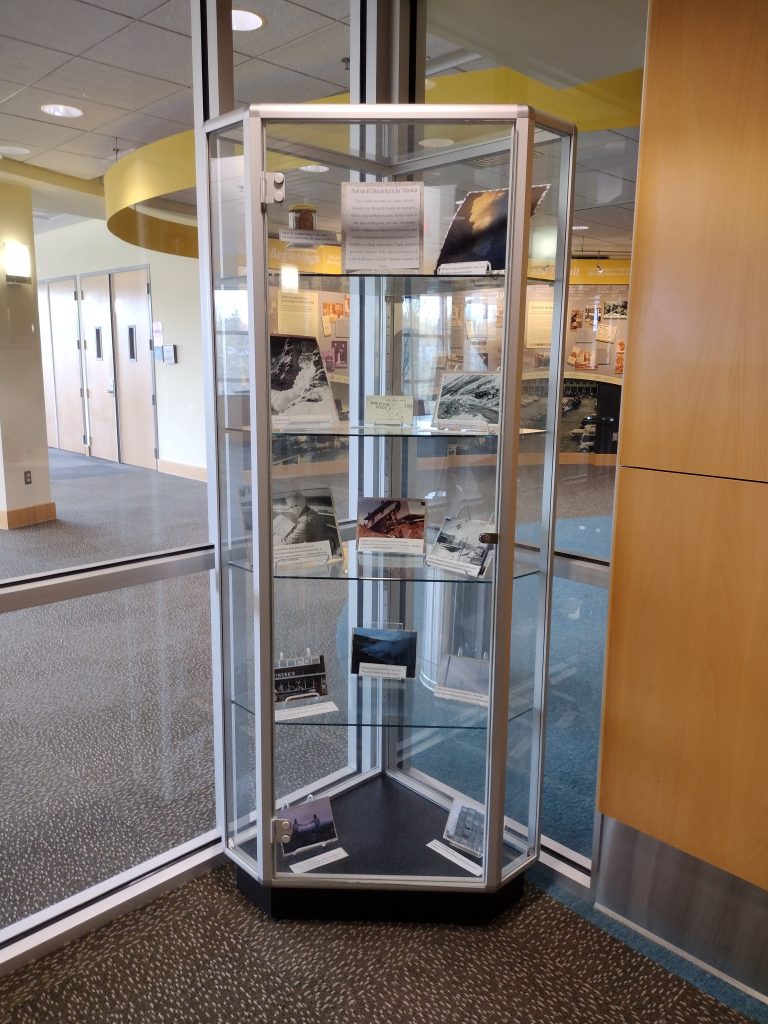Newly available:
Sparrevohn Air Force Station videos; circa 1953-1954. 1.15 GB. HMC-1493
Anchorage Charter Chapter American Business Women’s Association Anchor-Gram newsletter; 1978 February. 0.01 cubic feet. EPH-0610
Additional interview added to Archives and Special Collections. Student oral history interviews. 2024-2025. UAA-0230
Patrick Tierney photograph album; undated, 1949-1953. 0.3 cubic feet. hmc-1494-ahs. Album containing photographs taken or collected by a man who worked in the mining industry and at Eielson Air Force Base.
John P. Fay papers; 1892-2002. 4 cubic feet. hmc-1492. The legal and business papers of John P. Fay and the Hubbard-Elliott Mining Company. Processed and described by History Internship student Anastasia Tiernan.
New on Alaska’s Digital Archives:
32 images from Alaska Pacific University photographs (APU-0014).
39 images from Don Grybeck slides (HMC-1172).
Exhibits:
Anastasia, our intern from the History Department, wrapped up her experience with us by creating an exhibit for one of our research room cases featuring photographs and documents related to natural disasters in Alaska. She came up with the topic all on her own, and with the possibility of Mt. Spurr erupting in the near future, we thought it was timely. There is even a jar of ash from the eruption in 1953 on the top shelf. Stop by the Archives and check it out!

Rare Books
We don’t usually include a Rare Books category in our monthly report, but this is definitely a chance to highlight some amazing student work being done at UAA that involves the Archives in a very unique way. Alyssa, an undergraduate chemistry student, spent a lot of hours in the spring 2025 semester testing the covers of 52 of our Rare Books. Why? The TL:dr version is: because the green dye that was used to create beautiful green cloth bookcovers in much of the 19th century has arsenic in it. For more information (a lot more) about arsenic in book cloth, see the Poison Book Project website. As it turns out, some of our green books from the Rare collection had arsenic present. We’ve carefully bagged them and have removed them from access at the moment, but we will be working with the University’s Risk Management department along with UAA’s Applied Science, Engineering, and Technology (ASET) Laboratory to make decisions about how these books may be maintained and made accessible in future. Alyssa hopes to continue her research and we look forward to continuing to work with her!
By the way, pretty much all of those gorgeous cloth-covered books from the 19th century? The dyes they used have something problematic in them. Lead, chromium, arsenic, and so on. So if you love handling books from that era, just wash your hands before and after, maybe stay away from the green ones, and above all, don’t lick the books.


